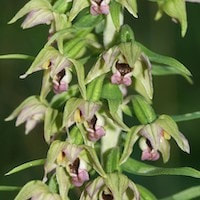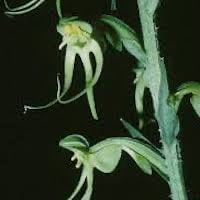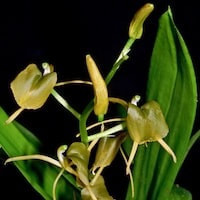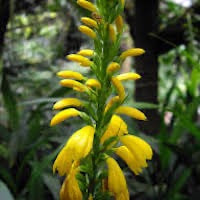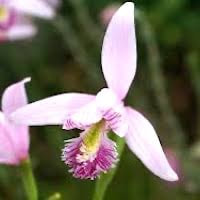WWD11- Women's Woody 11 - Head clover heals
|
Native Singaporean Orchid notes: Rhyncholaeliocattleya Young Kong '16'
Rhyncholaeliocattleya Young Kong '16' is a medium-sized Cattleya hybrid celebrated for its captivating fragrance and striking appearance. Created through careful hybridization of different Cattleya species, this orchid emits a highly fragrant aroma that is both enticing and uplifting, making it a popular choice for perfumery, including its use in the Woody 11 perfume designed for a women's team-building workshop. The flowers are large, with bright yellow sepals and petals, a darker yellow lip, and a red or lavender throat, creating a visually stunning combination. This hybrid's beauty and delightful scent make it a standout in both orchid cultivation and perfumery applications.
|
Therapeutic Orchid notes:
|
Epipactis helleborine (L.) Crantz.
Epipactis helleborine, known as "Xiaohuahuoshao Lan" or "small-flowered flaming orchid" in Chinese and "Yezhulan" in traditional Chinese medicine, is a terrestrial orchid thriving across Europe, Asia, and northwest Africa. Its fragrance is noted for a complex blend of floral and potentially citrus notes, though specifics remain sparse. Phytochemical studies reveal it produces compounds like loroglossin glucoside and quercetin O-glycosides, which possess antiviral and antifungal properties. In TCM, its root is used to clear lung and liver heat, relieve coughs, and facilitate better breathing and circulation. Historical uses include treating conditions like trauma, sore throat, and even insanity in Nepal, showcasing its medicinal versatility across cultures. |
|
Habenaria ciliolaris Kraenzl.
Habenaria ciliolaris, known as "Yufeng Lan" or "jade phoenix orchid" in Chinese, is an orchid species found in Hong Kong and Taiwan, typically in forested areas at altitudes around 800 meters. Its fragrance, though not well-documented, likely features floral notes with subtle hints of sweetness or citrus. In traditional Chinese medicine (TCM), the stem of this orchid is esteemed for its medicinal properties, believed to strengthen kidneys, clear heat from the body, and detoxify. It has been historically used to treat diverse ailments such as urinary issues, hernia, and snake bites, showcasing its therapeutic versatility and cultural significance in herbal medicine practices. |
|
Liparis distans C.B. Clarke Syn. Liparis yunnanensis Rolfe
Liparis distans, known as "Yunnan sheep ear orchid" in Chinese, is an orchid species recognized for its unique fragrance, though specific details about its scent remain scarce in current literature. Orchids typically emit floral aromas with delicate or subtle notes, showcasing a wide range of fragrances from sweet and floral to spicy or fruity undertones. In traditional Chinese medicine, Liparis distans, referred to as "Hushitou," is used for treating pneumonia. The entire plant is utilized in decoctions across regions like Guangdong, Guangxi, Guizhou, Yunnan, Sichuan, and Tibet, reflecting its medicinal significance. However, further research is needed to fully explore Liparis distans's fragrance and its potential applications in perfumery and aromatherapy, along with understanding its chemical composition and aromatic qualities in depth. |
|
Neuwiedia zollingeri Rchb. f. var.
Neuwiedia zollingeri var. Singaporeana, known as "Sanrui Lan" in Chinese and "Makphu makmia" in Thai, is an orchid species valued for its distinctive characteristics, including its fragrance and medicinal uses. However, detailed research on its specific scent profile is limited, with no widely available descriptions of its aroma. Orchids like Neuwiedia zollingeri var. Singaporeana typically emit delicate floral scents, but further olfactory studies are needed for a comprehensive understanding. In traditional Thai herbal medicine, its stem and roots are used to treat "furry tongue," although specifics on its preparation and active components remain undocumented. This species is found across diverse regions in Southeast Asia and is characterized by orchidaceous mycotrophic protocorms essential for its growth and survival in its natural habitat. Further scientific exploration into its fragrance and medicinal properties could unveil potential applications in perfumery, aromatherapy, and traditional herbal remedies. |
|
Pogonia japonica Rchb. f.
Pogonia japonica, known as "Zhu Lan" in Chinese and "Tokiso" in Japanese, is an alpine and terrestrial orchid with a unique fragrance and medicinal uses. Research on its specific scent characteristics is limited, but it likely emits a delicate floral aroma typical of orchids. In traditional Chinese medicine, the entire plant serves as an antidote for snake bites, highlighting its medicinal importance. Pogonia japonica thrives in damp habitats across northeastern China, southern provinces along the Yangzi River, Korea, and Japan, typically at altitudes from 400 to 2000 meters. Scientific exploration of its fragrance and chemical composition could reveal new applications in perfumery, aromatherapy, and medicinal treatments. |
Other scent note
Scentopia Library Reference ingredient
Galbanum - Check details at Scentopia's scent library
Download the guided mediation that works best with this Orchid fragrance oil
| women_woody_essential_oil_orchi_00011.mp3 | |
| File Size: | 110075 kb |
| File Type: | mp3 |

